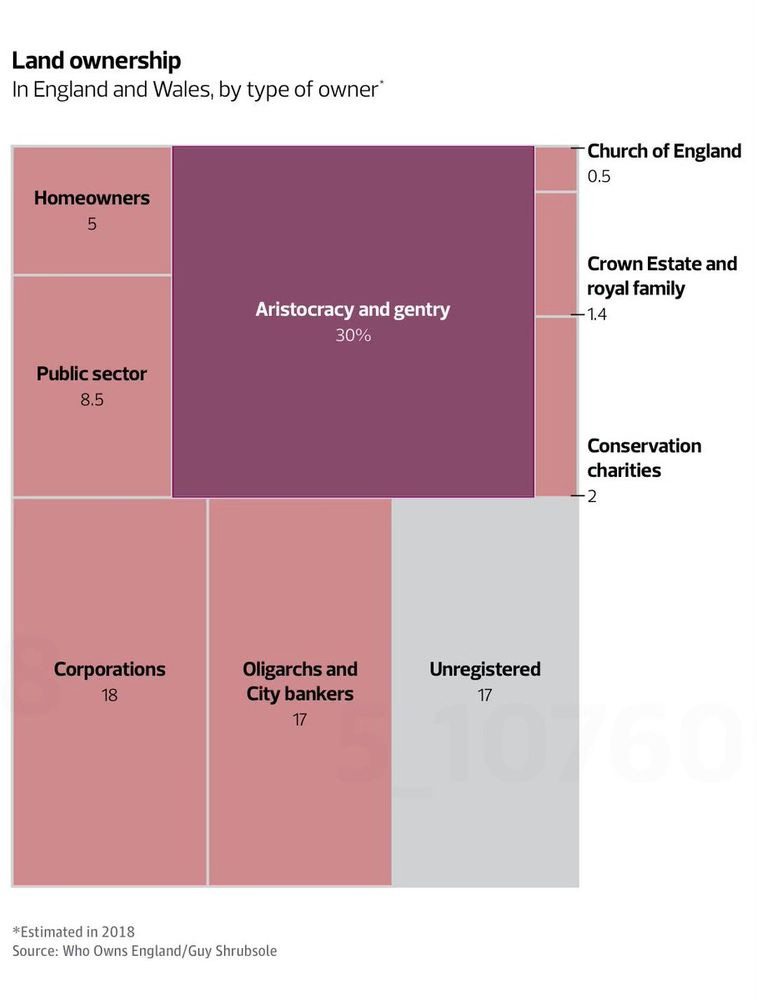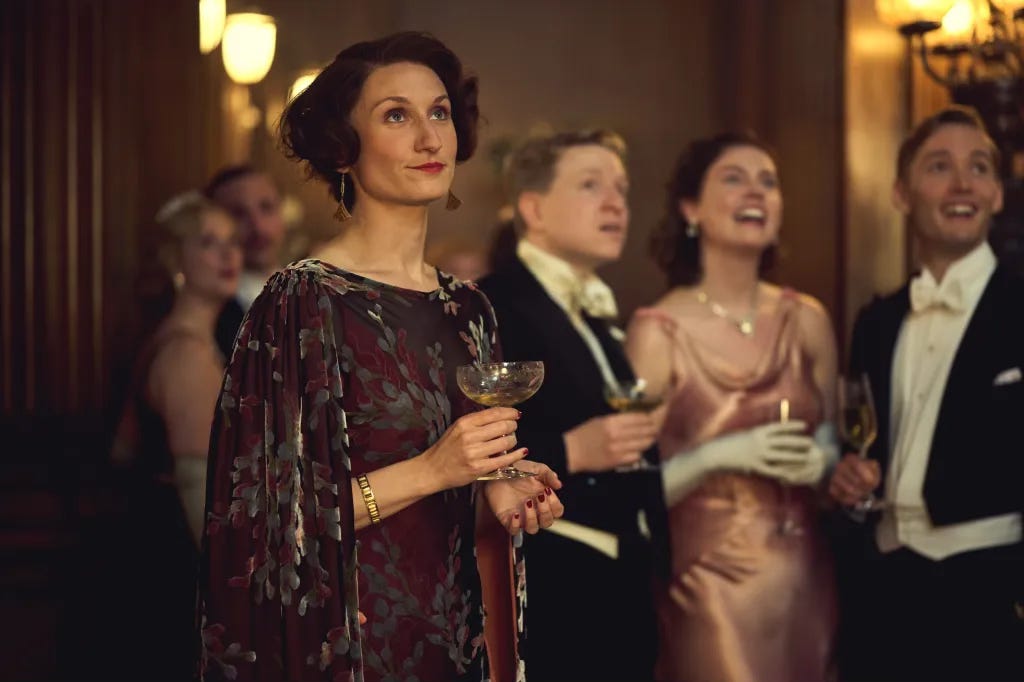Sometimes, writing a book about the dark underbelly of England’s stately homes can seem like a futile proposition, like wandering around shaking my fist at the sky. It’s all done now, over, irrelevant. Isn’t it?
Well, no. One of the arguments I make in the book is that stately homes and their occupants explain a lot of the modern world, from Jacob Rees-Mogg’s suits to James Dyson, and much more besides. And this week, two news stories have reared their head to prove my point.
Guy Shrubsole’s work on Who Owns England (the website is well worth your perusal as well as his excellent books) keeps reminding us that these are people who own huge swathes of the country, and therefore matter right now.
This graphic was produced by The Observer, to illustrate an article which, not entirely coherently, links up some research on how the aristocracy did not - as everyone thinks - lose their wealth in the twentieth century and have continuing cultural influence. Apparently 42% of George V’s great-great-grandchildren work in arts and entertainment, which is a most bizarre statistic, and I am kind of amazed that someone has worked it out, even if it is more about royalty than aristocrats.
The conclusion is that it’s all our own fault.
Could it be that our diet of aristocratic period dramas – in which they may be portrayed as good or bad, refined or unsophisticated, but always, always fascinating – is, even now, teaching us to fawn over a title?
Well yes, that and our uncritical visits to stately homes. But this does also lead me very nicely to the other story - I won’t dignify it with the title ‘news’ - which rather proves their point.
As you almost certainly know if you have opened any news source over the last week, the BBC is producing a new series about the Mitford sisters. Sigh.
You can read all about it in Country Life and a myriad of other places too.
Filming took place in Oxfordshire and Hertfordshire last summer. 'We were filming over a summer in these big, lovely houses — a lot of amazing country houses — really authentic to the types of houses the Mitfords would have lived in.’
And thus the endless cycle of glorifying the aristocracy and their houses continues on another round.
I am torn between just putting my head on my desk in despair and having so much to say about the Mitfords that it could be half a book in its own right. So let’s try and find some kind of middle ground.
Firstly, a reminder. The Mitfords are only still famous because they are upper class. It’s possible to consider Nancy as a writer worth remembering (albeit one who spent a long time working out whether the word dessert was acceptable in good society or not), but other than that we have two fascists, a communist who ran away from home (good story, admittedly), one who married a particularly rich aristocrat and one who stayed in the country with her horses and dogs.
They are famous now because they were famous then. One of the great pictures which I have definitely seen but have never been able to trace was of a newspaper stand in the early 1930s, and the headline scrawled on the poster was about how the Mitford sisters didn’t use napkins. In short, the upper classes were the influencers and nepo babies of their time, only the nepotism went back for centuries.
These aristocrats weren’t only newsworthy, just like modern social media stars they also got to write their entirely unnecessary autobiographies. One of the revelations of writing Burning Down the House has been just how many upper class autobiographies have been published over the years, despite being extremely dull and containing no explosive revelations whatsoever.
Although the most tedious now wouldn’t get a hearing, any reasonably scurrilous aristocratic autobiography will still find a publisher, so there are still plenty around, most of which end up serialised somewhere in the Daily Mail1. We haven’t given up on being interested in people whose only distinguishing characteristic is that their families have lived in the same place for a long time.
Underlying all of this is a principle that also animates every single stately home I have visited, whether owned by the original family or the National Trust. Which is that the upper classes are intrinsically worth looking at. They are - by reasons of their birth and breeding - more interesting than ordinary people. But just look at them.
And remember, these people have much better teeth than the originals.
These houses and dramas lock us into absurd deference and the continuation of a class system which we should have escaped for good after the Second World War. And it’s not just a bit of entertaining whimsy, a nice day out with a scone. Scroll back up to the top of the post. These people still own huge chunks of our country. We need to be asking them some serious questions about what they are doing with it, not just laughing at their fascism and foibles.
I say this having recently been reading the serialised excerpts from the Duke of Beaufort’s autobiography which, given that Badminton House is firmly shut to visitors, will never make it into the book. I might have to air them on here, then, as they make a good argument for shutting down the upper classes entirely.







Nancy was the writer: Pamela was a horsey countrywoman who stayed away from publicity. Jessica the communist was a pretty good civil rights agitator and investigative writer too, so I'd vote for her to remain famous.
I stumbled across a copy of A Silver-plated Spoon by one of the dukes of Bedford when I was a teenager and thinking, “These people are all a few screws short of a hardware store.” Still think so.